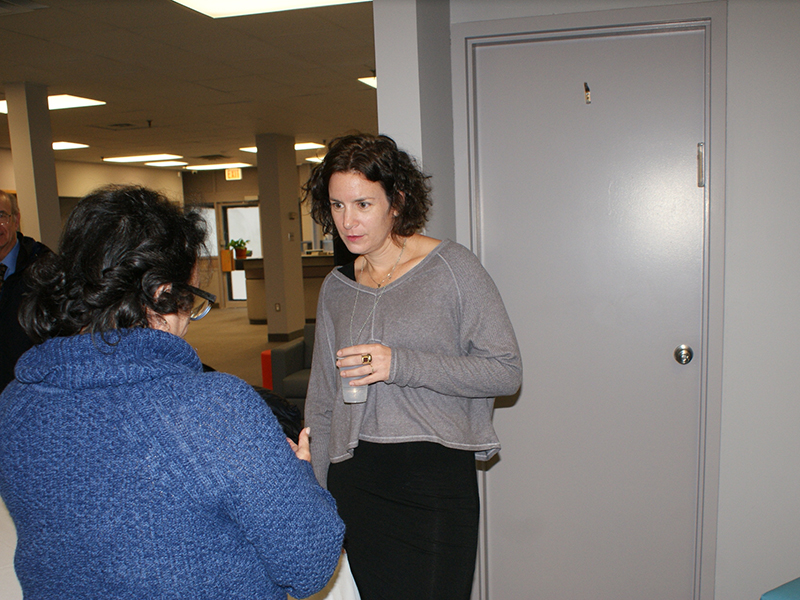Yael Raz Lachyani dreams of a “normal life.” For her, that’s a life where tax money can be spent on schools, hospitals and good roads, rather than bomb shelters; a life where her five children can look to the sky and see fireworks, rather than rockets raining down on them.
That dream is one of the things that keeps the Israeli native clinging to her home in Kibbutz Nahal Oz, which is located a scant 800 metres from the hotly disputed Gaza-Israel border. The agricultural settlement – where residents grow tomatoes, potatoes and sunflowers – has endured frequent attacks from Gaza, but despite the barrage, its 450 residents refuse to leave.
“In the beginning, it was just one or two rockets every couple of weeks and we all thought it would go away,” Lachyani said in an interview before her recent series of presentations in Hamilton, Ont. “For the last 12 years, however, we’ve been dealing with security, rather than building a strong community. Instead, we’ve built a large emergency staff, plus shelters and safe rooms.”
Lachyani’s stop in Hamilton was part of a three-city tour of Canada sponsored by the Jewish National Fund. The goal was to make comfortable Canadian Jews understand what it is like to live on the Gaza border, a place where periods of calm are frequently broken by terror attacks and all out war.
“We are so close to the border that most of the time, we don’t get more than three seconds notice of a terrorist rocket,” she said. “I have to have two safe rooms in my house. You have a normal life here. Not us. We hope for a normal life, but I’m happy that you have a normal life,” she said.
Nahal Oz was founded in 1951 by a group of IDF veterans who had served in the western Negev and wanted to settle in the harsh, but beautiful, desert region. Life was difficult during the violent times of the 1950s and ’60s, as Israel’s Arab neighbours tried to destroy the fledgling country. Conditions improved after the 1973 Yom Kippur War, when Gazans began coming into Israel to find jobs.
READ: FROM SAMSON’S FOXES, TO THE KITES OF GAZA
“Through the 1970s and 1990s, we had normal, neighbourly relations with Gaza,” Lachyani said. “Everything was calm, normal and peaceful.”
Nothing stays the same for long in the western Negev, however. The calm of the ’90s was shattered by the rise of Hamas in Gaza and the launch of a rocket offensive that, in 2014, forced Israel to move into Gaza, in what is known as Operation Protective Edge.
The seven-week operation saw 67 IDF soldiers killed and another 469 injured. As many as 2,300 Gazans were killed, as well.
You have a normal life here. Not us. We hope for a normal life, but I’m happy that you have a normal life.
– Yael Raz Lachyani
“We had two years of quiet after Operation Protection Edge – not Canadian quiet, but relative quiet for us,” Lachyani said. “Now we live with border protests and fire balloons that can cause a really big fire.”
During that brief war, she fled the kibbutz, but only until peace had been restored.
“For us, 2014 was the hardest year we’ve seen. It was just terrible,” she said. “That year, I left the kibbutz and lived as a refugee in my own country, relying on the good people of Israel. That was a bad time, with lots of missiles falling all around us.”
I’m optimistic that one day the situation will be different and we will have the kind of neighbours we want. To get there, we have to raise our voices and make people understand.
– Yael Raz Lachyani
During that time, a Nahal Oz family was killed by a rocket. By the end of the operation, 35 per cent of the population of the kibbutz had fled and not all returned.
Part of what keeps the citizens of Nahal Oz clinging to their little slice of Eden, Lachyani said, is the people.
“I love kibbutz life because we celebrate everything together,” she said. “I’m optimistic that one day the situation will be different and we will have the kind of neighbours we want. To get there, we have to raise our voices and make people understand.”
